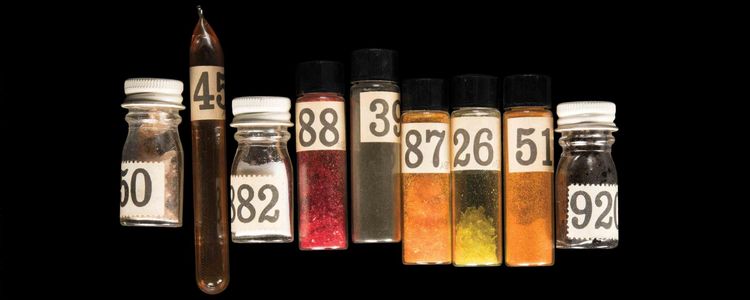About the School of Chemistry
Chemistry has been taught at St Andrews since 1811. The School of Chemistry has over 50 members of academic, administrative and technical staff who support teaching and drive the School's research programme. As part of the EaStCHEM research school, the School of Chemistry is recognised as a research leader in the UK, with activity and strength over five core research themes.
The School's mission is to inspire the next generations of chemistry and chemical science graduates by delivering globally recognised undergraduate and postgraduate education and training. The School's mission is also to provide a collegial, diverse and entrepreneurial environment that facilitates completion of world-leading research that impacts positively on our society.
The School's vision is to continuously develop so that it contributes even more strongly to the reputation of the University as a world-leading institution. The School aims to develop incentives and processes that enable its academics to improve the quality of research and to provide an ever more enriching environment for student learning where all can reach their full academic potential.
Research
The universities of Edinburgh and St Andrews have formed EaStCHEM, the leading Chemistry research school in Scotland, and one of the largest in the UK. EaStCHEM combines Scotland's two top research schools for chemistry and is recognised for excellence in both core and interdisciplinary chemistry. EaStCHEM ranked second in the REF 2014 "Power Table" (out of 35) with 95% of research papers classed as world-leading or internationally excellent.
The School engages locally and internationally with research sponsors, industry, scientific societies and other educational communities in order to advance chemical knowledge, innovate in the service of society and educate the next generation of chemical scientists.
Teaching
St Andrews offers a world-class education and ranks amongst the best universities in the UK. The School of Chemistry offers excellent undergraduate and postgraduate courses, with desirable student-to-tutor ratios and state-of-the-art, modern teaching facilities. The School was ranked second in Scotland by the Guardian University Guide 2019 and was ranked first in Scotland and fifth in the UK by the Complete University Guide 2019.
The School of Chemistry has one of the largest postgraduate groups in the University, with around 160 PhD students and 100 post-doctoral research workers contributing to its research output. The School's research groups have access to the latest commercially available technology that facilitates its cutting-edge research.
Facilities
State-of-the-art instrumentation, facilities and services are available across all of the research areas within the School. Students and researchers can also make use of the facilities of the EaStCHEM partner at the School of Chemistry at Edinburgh.
Find more information on the equipment available.
History

Chemistry has been taught and researched in St Andrews for over two centuries.
Sir Robert Robinson, who received a Nobel Prize for Chemistry in 1947, worked at the School of Chemistry between 1921 and 1923, and wrote the first paper to use the iconic 'curly arrow' to demonstrate electron movement during this time.
The University Museum houses the Chemistry Collection, which is a collection of historically significant instruments used for teaching and research from the 19th century onwards.
The University Library also houses a collection of historical books and manuscripts on alchemy, largely gathered by Professor John Read, a renowned scholar of the history of science.
A recently discovered periodic table, found while clearing out a lecture theatre, is believed to be the world’s oldest, having been dated as being printed between 1879 and 1896. In 2019 - the International Year of the Periodic Table as designated by the United Nations - the School celebrated this amazing discovery. The University was awarded a funding grant from the National Manuscripts Conservation Trust for the conservation of the chart. A full-size facsimile is now on display in the School of Chemistry, while the original periodic table is being kept in climate-controlled conditions.